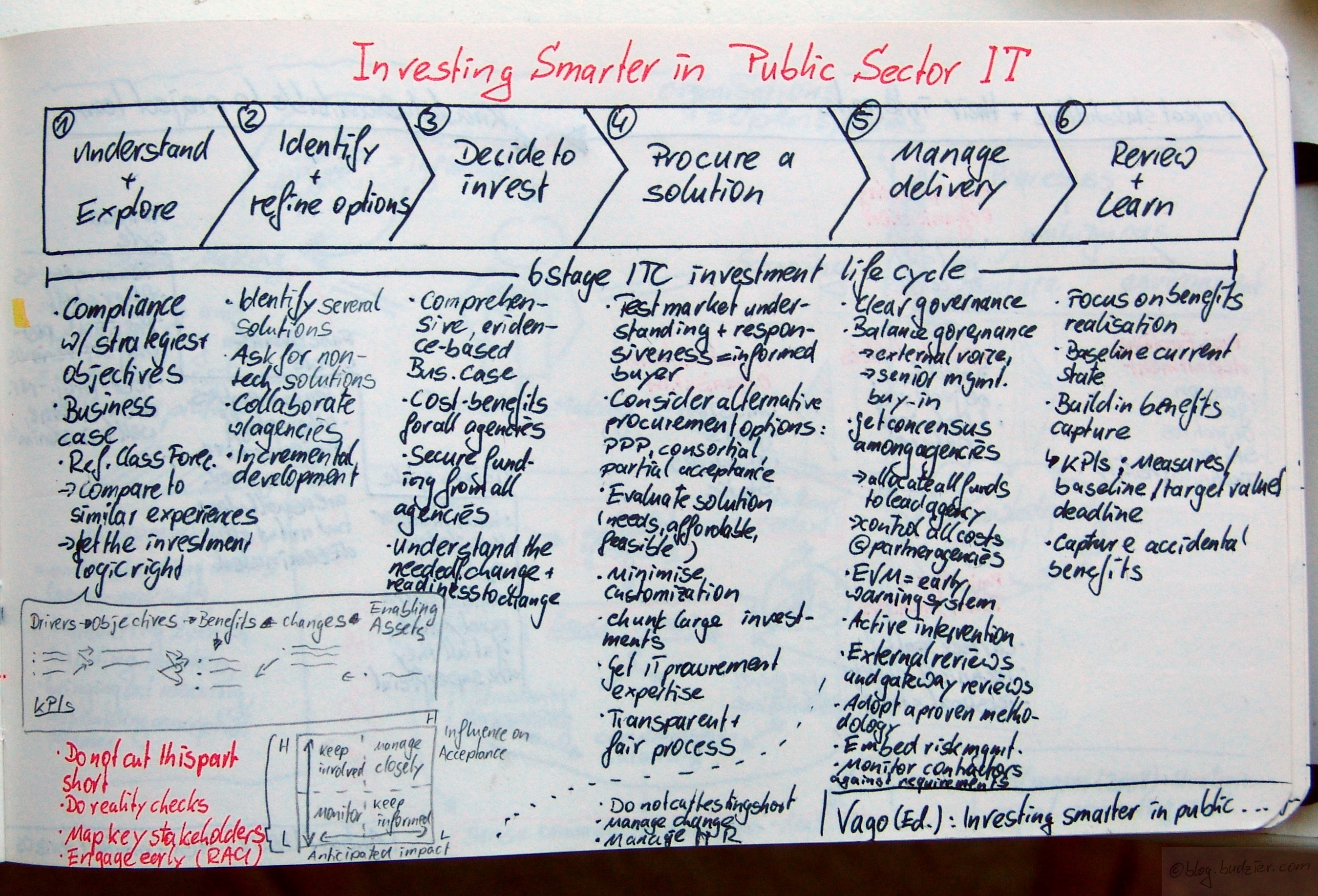Victorian Auditor-General’s Office (VAGO): Investing Smarter in Public Sector ICT, Melbourne 2008.
Download available here: http://download.audit.vic.gov.au/files/ICT_BPG_Intro.pdf
The VAGO has recently published (if I remember correctly it was end of July) a 6 step best practices guide on how to invest into ICT. The best part – it’s written in a clear, non-techy language. Readers don’t have to be the master genius of IT to put this into practice. They break down the ICT project flow into 6 distinct steps, which are
(1) Understand & Explore
(2) Identify & Refine options
(3) Decide to invest
(4) Procure a solution
(5) Manage delivery
(6) Review & Learn
The nice thing in this guide is that it lists a lot of best practices, things to avoid, and gives meaningful examples. Although most of the recommendations sound fairly basic (It’s basic not trivial!) the hard part is actually doing them. I would never ever have expected that benefits and costs are not calculated cross agencies, or that someone is not considering a non-tech solution.
